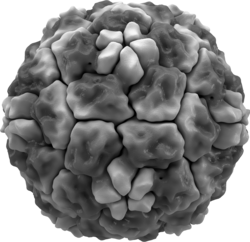نزٕل
بؠمٲرؠ
نزٕل یا زُکام چھ ہیٚور شاہ نالہِ اَکھ وایرل۔ اِنفیکشَن یوٚس بنیٲدی طور پٲٹھؠ چھ نَس ہۆٹ، سینوس تہٕ گڈُر متٲثر کران۔[1][2] علامتہٕ تہٕ نِشان ہیٚکن وایرس کہ ایکسپوجرٕ پتہٕ کم کھوتہٕ کم دۄن دۄہن مَنٛز ظٲہر گژھتھ۔[1] یمن مَنٛز ہؠکہ ژاس، ہٹِس لگُن، نس نزٕل کرُن، پۄندٕ،کلہٕ دود تہٕ تَپھ شٲمل ٲستھ۔[3][4]
حَوالہٕ
اؠڈِٹ- ↑ 1٫0 1٫1 Allan GM، Arroll B (February 2014). "Prevention and treatment of the common cold: making sense of the evidence". CMAJ. 186 (3): 190–9. doi:10.1503/cmaj.121442. PMC 3928210. PMID 24468694.
- ↑ Arroll B (March 2011). "Common cold". BMJ Clinical Evidence. 2011 (3): 1510. PMC 3275147. PMID 21406124.
Common colds are defined as upper respiratory tract infections that affect the predominantly nasal part of the respiratory mucosa
- ↑ "Common Colds: Protect Yourself and Others". CDC. 6 October 2015. Archived from the original on 5 February 2016. Retrieved 4 February 2016.
- ↑ Eccles R (November 2005). "Understanding the symptoms of the common cold and influenza". The Lancet. Infectious Diseases. 5 (11): 718–25. doi:10.1016/S1473-3099(05)70270-X. PMC 7185637. PMID 16253889.
